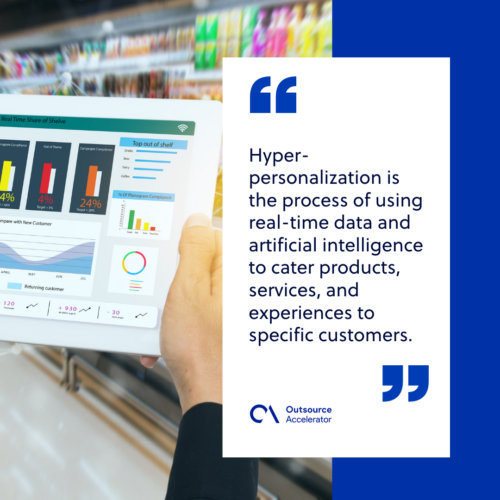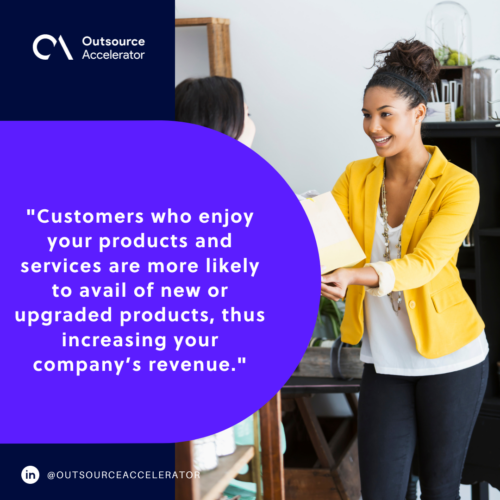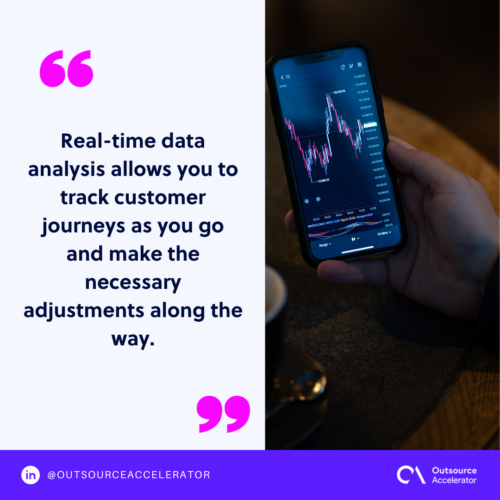Why hyper-personalization matters for businesses

It is no secret that customer-business relationships must be a priority. This can be established by creating personalized solutions and products for customers.
However, with the rise of AI and technology, businesses are changing how they cater their solutions. Nowadays, brands are targeting not just specific groups of people but individual customers themselves.
Customers’ needs are unique to them only, and with the help of technology, brands can hyper-personalize their content to be specific to each individual.
What is hyper-personalization?
Hyper-personalization is the process of using real-time data and artificial intelligence to cater products, services, and experiences to specific customers.
For example, a brand may offer a product to groups A, B, and C since these groups have different needs.
However, hyper-personalization goes deeper than that and targets the individual people within those groups since they also have their own specific needs.

Hyper-personalization vs. Traditional personalization
Traditional personalization offers customers a general product or service, while hyper-personalization takes a more specific and context-based approach.
An example of traditional personalization would be sending the same email to customers and only changing the recipient’s name.
On the other hand, hyper-personalization takes into account a customer’s preferences and previous experiences to come up with something specific to them only.
Benefits of hyper-personalization
Hyper-personalization offers several benefits for businesses to succeed and gain a loyal customer base.
Returning customers
Creating hyper-personalized experiences will cause customers to keep coming back. It shows that the business knows its customers well and their specific needs.
Additionally, customers appreciate when brands get to know them personally and cater experiences to suit their needs instead of providing general or basic services.
Cost savings
Instead of spending money on expensive marketing campaigns to attract customers, brands can save up on these costs. They can target current customers who have already bought from them.
The saved costs can be used to maintain and invest in long-term customer relationships.
Increased upselling and cross-selling
Brands use context from hyper-personalization to predict which new products their customers are most likely to buy.
Customers who enjoy your products and services are more likely to avail of new or upgraded products, thus increasing your company’s revenue.

Key elements of hyper-personalization
To perfect hyper-personalization, your business must first master the different elements. Here are some of the main ones to remember.
Know your audience
Knowing your audience is the main key to gaining repeat customers and increasing customer loyalty.
This is where context comes in, which a brand can get from a customer journey orchestration. You can get a clear picture of your customer’s pain points, likes, and dislikes, and maintain the relationship between the two sides.
Data privacy
Because hyper-personalization involves customers’ personal data, businesses must prioritize keeping this data confidential.
Companies should implement robust data confidentiality methods to prevent threats like cyberattacks and data breaches.
After all, customers would rather trust a company that can keep their personal information safe.
Big data
Big data refers to large volumes of information from various data sources. This includes all things customers go through when engaging with a brand, from interactions to product purchases.
Harnessing all this data, with the help of artificial intelligence, analytics tools, and data mapping, gives your business a framework to create personalized customer experiences.
Hyper-personalization best practices
Hyper-personalization can be achieved in many different ways. Here are some best practices to consider:
Deeper audience segmentation
As mentioned earlier, hyper-personalization goes deeper than offering products to general groups of people.
The more specific your target is, the more you can create tailored experiences and understand customer needs.
Instead of generalizing groups of people or staying within a broad demographic (like male/female, age 18-45), try targeting customers based on interests and values.
Data integration
Because you have to handle large amounts of data from different sources, all pertaining to different people, it may be impossible to find any common links between them.
It is best to invest in a data integration tool that allows you to spot patterns and analyze data from as many sources as possible.
The more data you have to work with, the easier it will be to personalize a customer’s experience.
Real-time data analysis
Real-time data analysis allows you to track customer journeys as you go and make the necessary adjustments along the way.
Even small improvements can pile up and make a difference, eventually creating the perfect experience for your customers.
You can monitor engagement on social media or test different versions of your marketing advertisements and tactics.

Knowing customers through hyper-personalization
Hyper-personalization is an ongoing trend and process that is not going away any time soon.
Businesses must be ready to apply the necessary changes to give their customers the best brand experience possible.
For businesses with limited resources, service providers such as 123Employee can help in applying hyper-personalization throughout their customer-related tasks.
Customers are not just walking stacks of money for businesses to take advantage of. They are real people with real goals, interests, and pain points; brands must treat them as such.







 Independent
Independent




